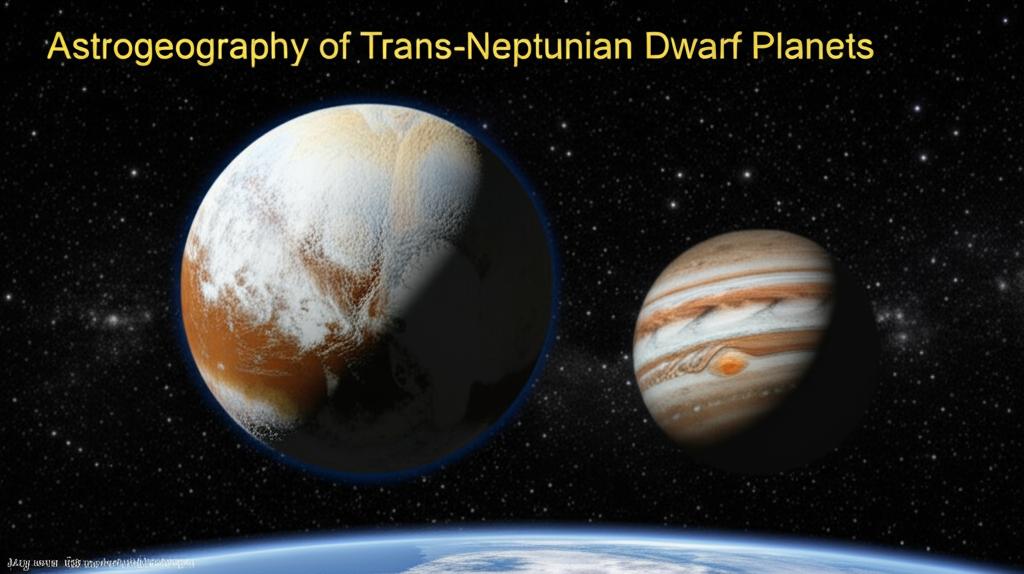The study of Trans-Neptunian Objects (TNOs), including dwarf planets, is a rapidly evolving field in both astronomy and astrology. These celestial bodies, orbiting our Sun beyond Neptune, are considered by astrologers to represent the outer reaches of our solar system and offer insights into the unknown and hidden aspects of the human psyche. While Pluto is a long-acknowledged TNO in astrology, others like Eris, Sedna, Makemake, and Haumea are gaining increasing attention.
Astrogeography, a branch of astrology also known as astrocartography, explores how specific locations on Earth resonate with different planetary influences in an individual's birth chart. By mapping these energies across the globe, practitioners aim to identify optimal places for various life pursuits, such as career, love, or spiritual growth. The lines of outer planets like Uranus, Neptune, and Pluto (and by extension, other TNOs) on an astrocartography map are often associated with transformative influences and profound life changes.
Emerging Archetypes of Trans-Neptunian Dwarf PlanetsWhile research is ongoing, certain astrological themes are beginning to crystallize for the more prominent trans-Neptunian dwarf planets:
- Eris: Discovered in 2005, Eris is named after the Greek goddess of strife and discord. In astrology, Eris is often associated with the "feminine warrior" archetype, representing the fight for one's soul purpose and making a stand for deeply held beliefs, even if it involves struggle or upheaval. It can point to areas where one needs to build strength, ferocity, and assertiveness. Some astrologers connect Eris to the no-holds-barred fight for existence, a fundamental aspect of natural processes, and the feminist struggle for rights. Eris has been in the sign of Aries since the 1920s and will remain there for a considerable time, influencing those with significant Aries placements.
- Haumea: This fast-rotating, rocky dwarf planet is named after the Hawaiian goddess of creation and fertility. Astrologically, Haumea is linked to themes of fertility, rebirth, and the cyclical nature of life. It signifies creative and regenerative forces, the ability to transform and renew, often through life crises that lead to personal growth. Haumea's energy is also associated with feminine power, nurturing, and a profound connection to nature and its processes. The discovery of a ring system around Haumea adds to its unique astronomical profile.
- Makemake: Named after the creation god of the Rapa Nui people of Easter Island, Makemake's astrological themes often revolve around environmental awareness and Earth wisdom. Its discovery coincided with a period of growing global concern over environmental issues. Makemake may symbolize the consequences of our actions on the natural world and the potential for spiritual renewal through a reconnection with nature. Some interpretations also link Makemake to delving into the psyche to obtain wisdom, merging intuitive insight with action.
- Sedna: One of the most distant known objects in our solar system, Sedna is named after the Inuit goddess of the sea and marine animals. Its highly elliptical orbit keeps it far from the Sun for most of its long journey. In astrology, Sedna is often associated with themes of the deep unconscious, resilience in the face of victimisation, and profound transformation arising from difficult circumstances. It can signify experiences of feeling alienated or betrayed, leading to a shedding of old patterns and an eventual rebirth into a new state of being, much like the mythological Sedna's own story of deformation and becoming a powerful underworld figure. There's also a strong connection to the ocean and its mysteries, and often found prominently in the charts of those with a deep connection to water or ocean activism.
When incorporating TNOs into astrogeographical analysis, astrologers look at where the lines of these distant bodies fall on a world map in relation to an individual's birth chart. These locations might be seen as places where the deeper, more subtle, and often unconscious themes represented by these dwarf planets could be experienced more intensely or come to the forefront of an individual's life.
For example:
- A location on an Eris line might bring experiences that challenge an individual to assert themselves, fight for their beliefs, or confront discord in a significant way.
- Areas influenced by Haumea lines could be potent for creative renewal, connecting with natural cycles, or experiencing profound personal transformations related to birth and rebirth.
- Makemake lines might highlight places where an individual can deepen their connection to environmental concerns, find spiritual wisdom through nature, or confront the consequences of past actions on their resources.
- Living or traveling on a Sedna line could activate themes of deep psychological processing, confronting past traumas or betrayals, and ultimately finding profound resilience and connection to a deeper source.
The astronomical discovery of new TNOs continues, with objects like 2017 OF201 recently announced as a potential dwarf planet with an extremely wide orbit. As our understanding of the outer solar system expands, so too will the astrological exploration of these distant celestial bodies and their potential significance in our lives and the collective psyche. The astrogeography of trans-Neptunian dwarf planets, therefore, remains a pioneering area of study, offering fresh perspectives on the profound and often hidden forces that shape our individual and collective destinies across different geographical locations.

